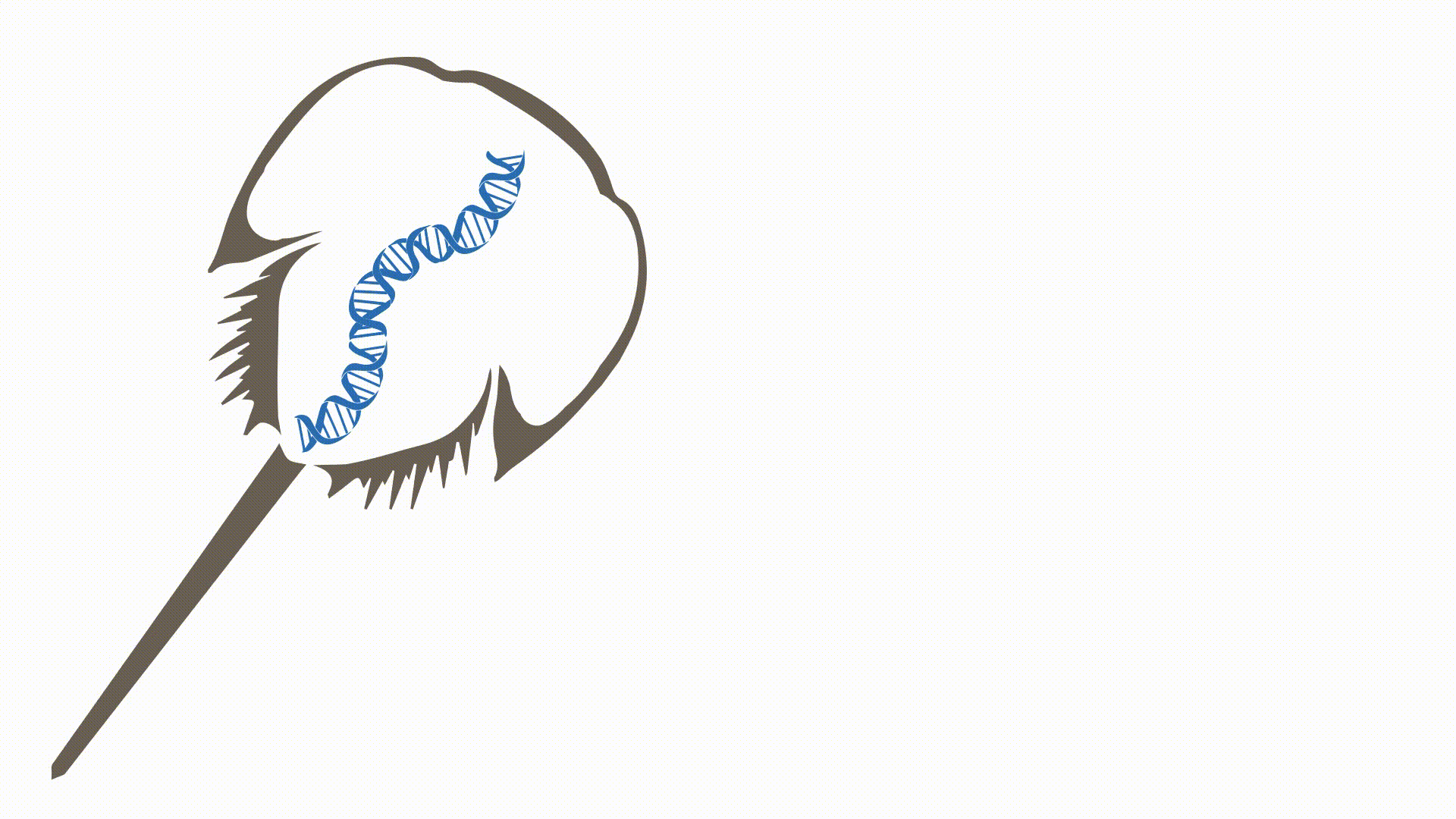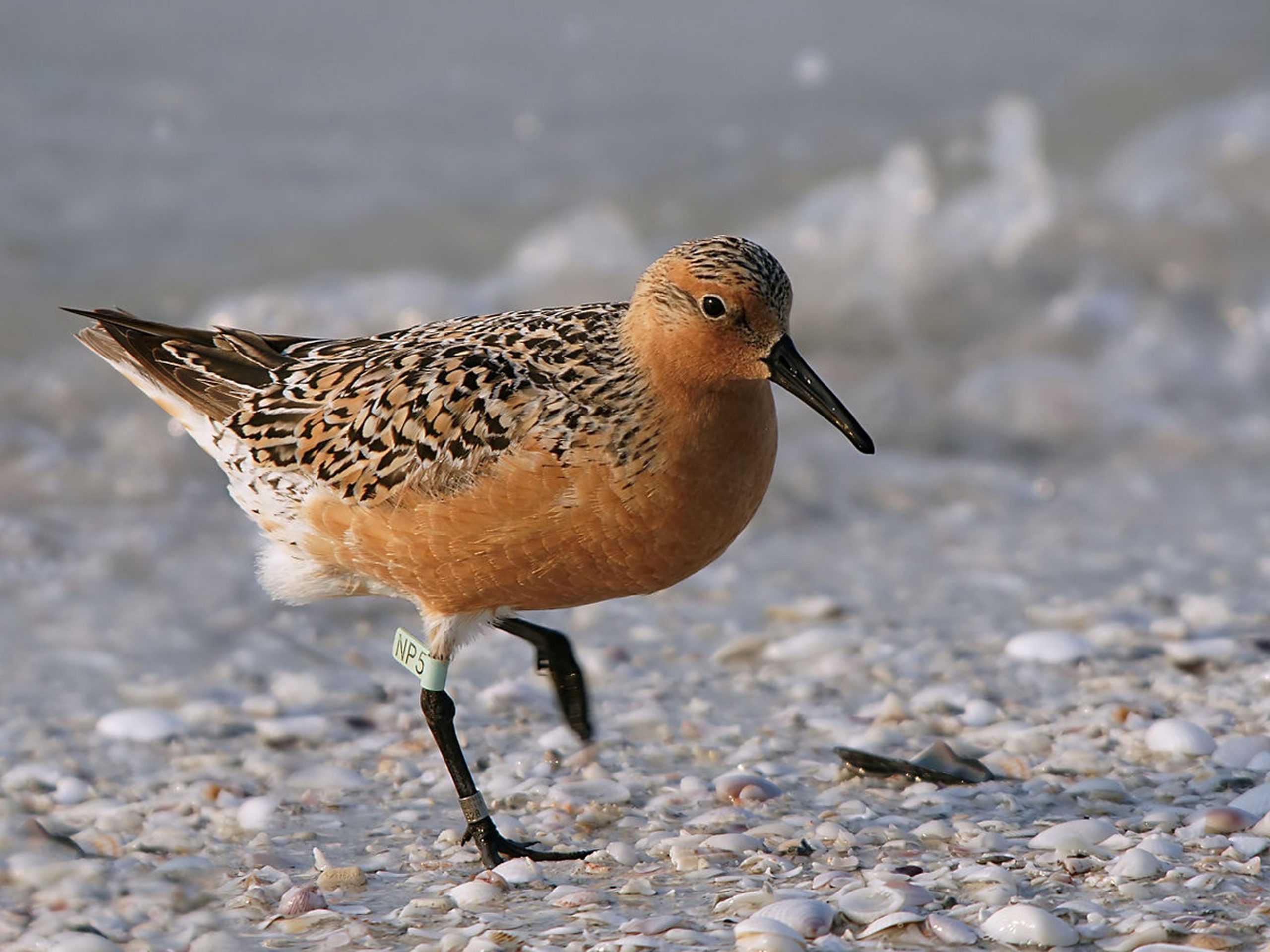The four species of horseshoe crabs are an ancient (~450 million years old) and important species that support the ecological function of estuaries and the survival of migratory shorebirds. The current over-exploitation of horseshoe crabs is sadly not dissimilar to other mismanaged species that were driven to extinction.
The Harvesting of Horseshoe Crabs for the Pharmaceutical Industry
Horseshoe crabs have been integral to the safe production of injectable vaccines, drugs, and certain medical devices. In the United States, hundreds of thousands of the American horseshoe crab (Limulus polyphemus) are captured and bled alive every year for this purpose. Compounds in horseshoe crab blood effectively and efficiently detect bacterial contamination; the reaction between these compounds and contaminants is the basis of the biomedical test, Limulus Amebocyte Lysate (LAL).
LAL became the industry standard for detecting bacterial contaminants, known as endotoxins, in the late 1970s. LAL replaced the pyrogen test, which used rabbits for detecting bacterial contamination. Every injectable medication approved by the U.S. Food & Drug Administration must be tested for the potential contamination by bacterial endotoxins. Because of population growth and innovations in the pharmaceutical field, global demand for this testing process is growing.
Recombinant Factor C, The Synthetic Alternative
Recombinant factor C (rFC) – was developed over 20 years ago by two scientists at the Nation University of Singapore, Ling Ding Jeak and Bow Ho. But the test has not achieved sufficient market penetration to decrease the industry’s reliance on the LAL by any significant amount. Revive & Restore seeks to find and remove barriers to the adoption of this synthetic alternative in order to stop the bleeding of horseshoe crabs – a procedure that kills between 15 and 30 percent of bled crabs and poses unknown long-term risks to the species. Learn more about rFC, below.
HOW TO HELP SAVE THIS SPECIES

- Use rFC equivalency guidelines from the European Pharmacopeia in manufacturing of pharmaceuticals
- Urge the US Pharmacopeia and the FDA to catch up with international standards
- Highlight the efficacy, safety, and equivalency data of rFC for the biopharmaceutical market
- Raise awareness of rFC and the importance of the horseshoe crab in its ecosystem
Other Serious Threats
The biomedical applications of horseshoe crab blood create a huge demand for the horseshoe crab; but the pharmaceutical industry alone isn’t responsible for the overharvest of this species. Not only are the crabs captured and bled for biomedical applications, but about 500,000 are also harvested as bait for the eel and conch fisheries. Compounding the threat of over-harvesting are the effects of climate change. Increasingly frequent and intense storms and rising sea levels are diminishing the availability of suitable spawning habitat for the horseshoe crab.
The situation is even more dire in Asia; in addition to the huge take of horseshoe crabs for biomedical testing, food, and other uses, massive shoreline alterations on the continent are destroying estuary habitats for the crabs and migratory shorebirds at an unprecedented scale. All three Asian horseshoe crab species are modeled to go functionally extinct within this decade under current harvest rates.
All of these issues warrant concern and immediate conservation action solely to protect this ancient animal. But the bleeding and over-harvesting of the horseshoe crab are causing significant ecosystem-level impacts as well. Most notably, along the Atlantic Flyway of North America, six species of long-distance migrant shorebirds synchronize their northward migration to gorge on the eggs of spawning horseshoe crabs on their way to Arctic nesting grounds. A 2006 study confirmed the highly-correlated relationship between the availability of horseshoe crab eggs and the survival of long-distance migratory shorebirds.
Growing Incentive for the Adoption of a Synthetic Substitute
Until recently the manufacturing and patents for rFC were licensed to Lonza – one of three LAL manufacturers in the United States. With the expiration of patent protection in the U.S., additional suppliers are now producing rFC, ending an important barrier to adoption for the pharmaceutical industry.
Lingering doubt on the efficacy of rFC has also been an important barrier to adoption of rFC. Although there is now abundant evidence that the efficacy of the synthetic alternative is equivalent to or better than LAL, the adoption of new technology is difficult and change has come slow to the industry. Since the development of rFC, numerous studies have been conducted to evaluate its efficacy and comparability to LAL for a wide variety of potential applications.
In 2018, Revive & Restore synthesized the available studies to demonstrate that all available scientific evidence suggests that commercially-available rFC tests detect endotoxins with equivalent or better efficacy than the LAL test. In fact, rFC signals fewer false positives, which can be costly when they occur in the manufacturing process. Our review study was published in PLOS Biology on May 10, 2018. Since then, even more evidence makes the case for rFC.
We are optimistic that the pharmaceutical industry will live up to industry sustainability tenets and make the switch away from the unnecessary use of animals in the production of injectable medications—including coronavirus vaccines—especially now that there are international standards for doing so. Learn more.
The horseshoe crab is a KEYSTONE SPECIES
Many animal species depend upon the horseshoe crab for their survival. One, the red knot (Calidris canutus) migratory bird, gorges upon horseshoe crab eggs in Delaware Bay before the last leg of its extraordinary spring migration, which starts at the tip of South America and ends in the Canadian Arctic.
Yet the bleeding and over-fishing of crabs continue despite their numbers in Delaware Bay appearing to be at one-third of their historic numbers. As the numbers of horseshoe crabs decline, so too does the red knot population. The eggs and larvae of the horseshoe crab also form an important link in the food chain that should be supporting Delaware Bay’s sport fishery. For any meaningful recovery of the red knot and other species in the Delaware Bay, horseshoe crabs must return to spawn on the beaches there in greater numbers.




